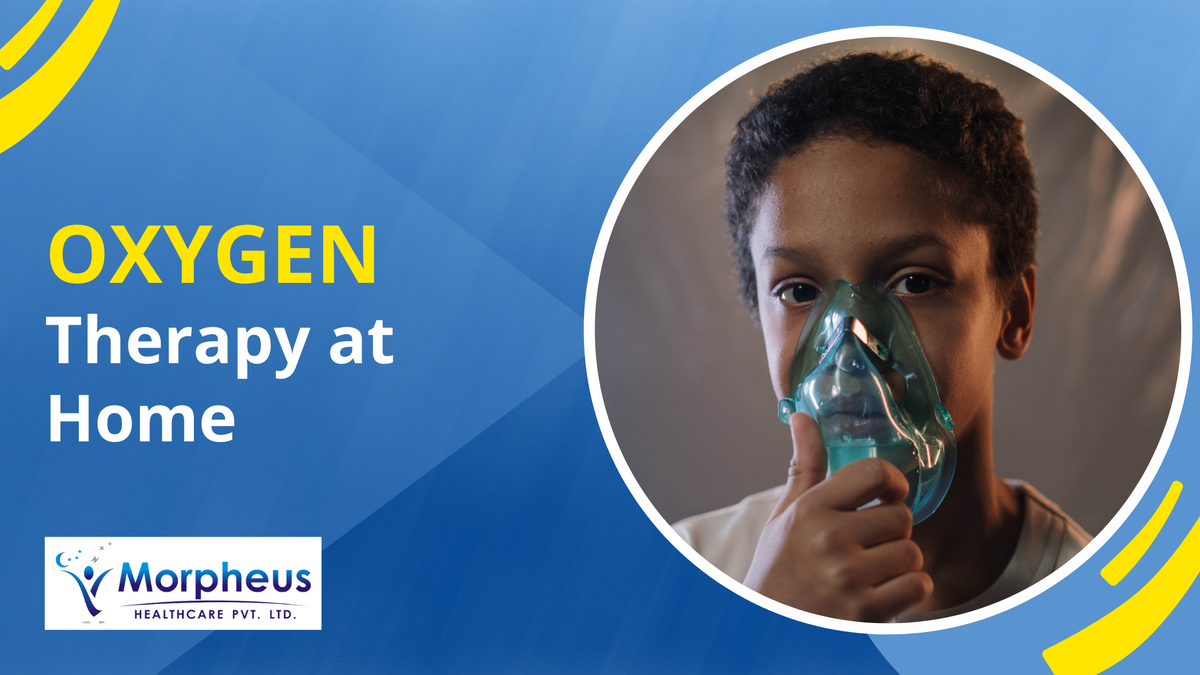What is Oxygen Therapy?
May 17, 22

21% of the air we breathe in comprises of Oxygen, which is essential for our sustenance. With every single breath, we take oxygen into our bodies. The oxygen from the lungs is then dissolved into the bloodstream and delivered to the organs and tissues in our body through blood circulation.
People who have low levels of oxygen in their bloodstream either due to a chronic respiratory disorder or because of acute lung disease, require additional oxygen for proper respiration. The use of supplemental oxygen to compensate for low levels of oxygen in the body is called oxygen therapy. This supplemental oxygen is provided through an electronic device called the Oxygen Concentrator or through an Oxygen Cylinder filled with liquid oxygen.
Home oxygen therapy is prescribed to those with low levels of oxygen in their bloodstream. Your doctor will perform a test to decide whether you will benefit from having additional oxygen.
What tests are performed to decide whether I have enough oxygen in my blood?
Blood oxygen saturation is measured by attaching a small device called the pulse oximeter to your finger. This is a non-invasive monitor which measures the amount of oxygen in the bloodstream, compared to normal levels of oxygen suitable for your body.
How is supplemental oxygen used?
Some people are advised supplemental oxygen for a temporary period, owing to an acute respiratory illness. In such cases, oxygen therapy becomes an essential part of recovery from the disease.
However, people with a chronic respiratory condition usually require oxygen therapy for a more extended period to compensate for reduced lung health.
If oxygen is to become a permanent part of your life, your doctor will tell you how many hours you should use oxygen each day for maximum benefit. This usually falls into one of three categories:
- During activity and exercise.
- While you are sleeping.
- Continuous, long-term oxygen – for at least 16 hours per day.
What are the different types of oxygen equipment?
There are two main categories of equipment used to provide supplemental oxygen to patients. Oxygen comes from either oxygen concentrators or oxygen cylinders.
Oxygen Concentrator – An oxygen concentrator is a device which works on electricity and concentrates oxygen from the room air itself. With an Oxygen Concentrator, the user does not have to worry about repeated refilling. Just plug and switch it on for a continuous supply of oxygen as per the prescribed settings. Oxygen Concentrators are of 2 kinds -
- Static oxygen concentrator – Typically the size of a bedside table, this is suitable for use at home for patients who need continuous oxygen.
- Portable oxygen concentrator – This is a smaller, lightweight machine that is designed to be carried around and outside the home. It is powered by rechargeable batteries and is ideal for patients who need oxygen during physical activity such as walking and going from one place to another.
Oxygen Cylinder – An oxygen cylinder is a cylinder made up of metal alloy, with the capacity to hold liquid oxygen within its chamber. The size of oxygen cylinder varies depending on its oxygen storage capacity and requirement of the user. Following are the two main types of oxygen cylinders -
- Portable Cylinder - designed to be used when leaving home. It can be wheeled and attached to a walker, wheelchair or carried in a backpack.
- Static Cylinder – larger than a portable cylinder, this is meant for use within the home environment and can serve a much higher oxygen requirement because of its large size. It is often kept as a backup source for an Oxygen Concentrator, in the event of a power failure
How to ensure safety while on Oxygen therapy?
Oxygen use in the home is reasonably safe if you take the necessary precautions. Oxygen does not explode; however, it does support combustion.
One should not smoke or be near anyone else smoking while using any oxygen devices. Oxygen should not be used while close to gas stoves, lighted fireplaces, or any other sources of open flame or smoke.
Tips for those prescribed home oxygen therapy:
1. Have your oxygen prescription reviewed regularly.
2. Home oxygen is not addictive.
3. Home oxygen does not always relieve breathlessness and not all those who experience breathlessness will benefit from home oxygen.
4. Most people find the self-consciousness associated with oxygen therapy is short lived. The positive benefits should quickly start to outweigh any embarrassment.
5. Continue with everyday life; try to keep up activities that are important to you.
6. Travelling with oxygen is possible and requires planning


